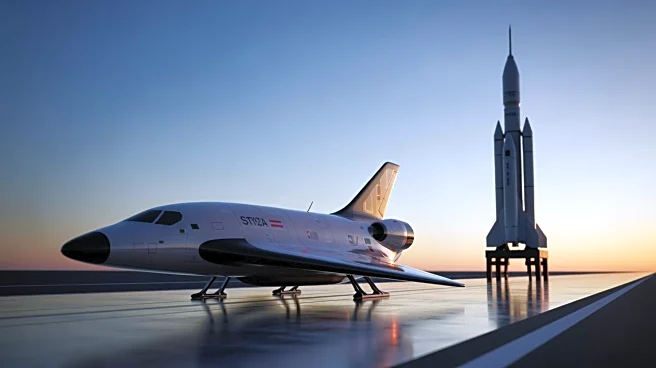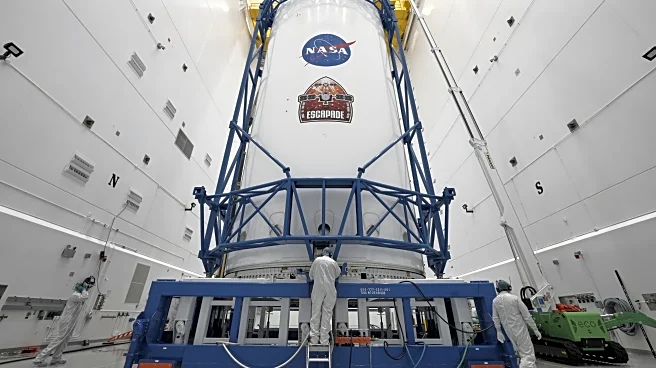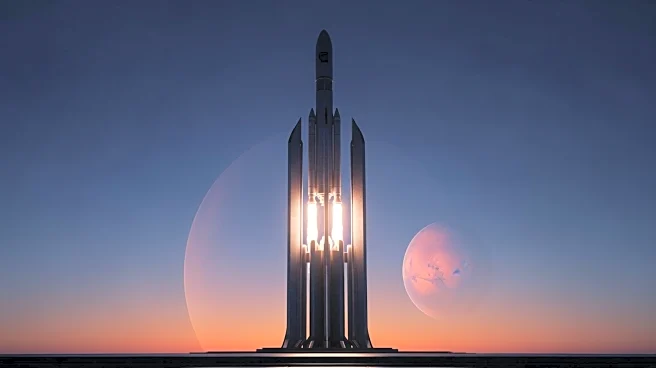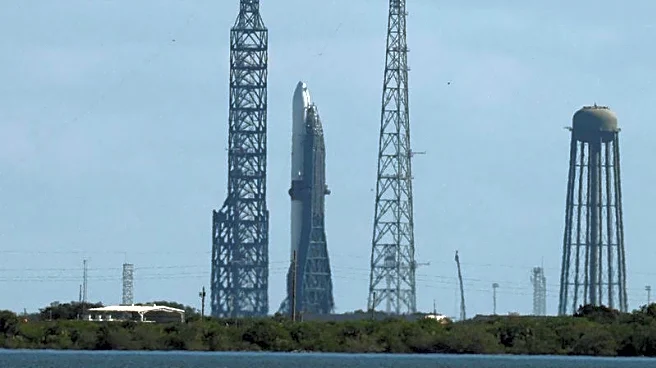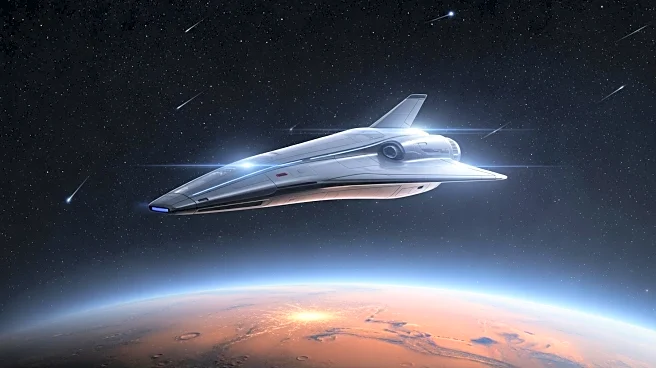What's Happening?
NASA has successfully deployed its twin ESCAPADE spacecraft into orbit, marking the beginning of a coordinated two-spacecraft mission to Mars. The launch took place on November 13 from Cape Canaveral Space
Force Station in Florida, utilizing Blue Origin's New Glenn rocket. The mission aims to study Mars' magnetosphere and its response to solar activity, providing insights into environmental conditions that could impact future missions. The spacecraft will undergo a yearlong Earth-proximity phase to build the necessary speed for a trans-Mars injection burn scheduled for November 2026, with an expected arrival at Mars in September 2027.
Why It's Important?
The ESCAPADE mission represents a significant advancement in space exploration, particularly in understanding Mars' magnetosphere. This knowledge is crucial for planning future robotic and human missions to Mars, as it will help scientists predict environmental conditions and potential challenges. The mission also highlights the collaboration between NASA and various partners, including the University of California, Berkeley, and Blue Origin, showcasing the importance of partnerships in achieving complex scientific goals. The findings from this mission could pave the way for more efficient and safer space travel.
What's Next?
Following the Earth-proximity phase, the ESCAPADE spacecraft will perform a trans-Mars injection burn in November 2026. Upon arrival at Mars in September 2027, the satellites will enter a large capture orbit, with the science mission set to begin in spring 2028. The mission will focus on coordinated measurements to study Mars' magnetosphere, which will be crucial for future exploration efforts. NASA and its partners will continue to adjust and synchronize the spacecraft's trajectories to ensure successful data collection and analysis.
Beyond the Headlines
The ESCAPADE mission not only advances scientific understanding but also demonstrates the growing role of private companies like Blue Origin in space exploration. This collaboration could lead to more cost-effective and innovative solutions for future missions. Additionally, the mission's focus on Mars' magnetosphere could have implications for understanding similar phenomena on Earth, potentially influencing climate science and environmental policy.


